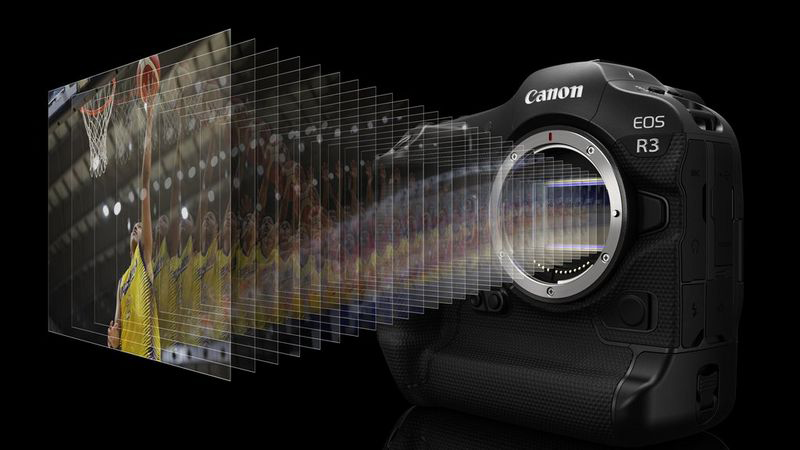The Canon EOS R3 was already a ludicrously capable sports camera, but a major new firmware update has taken its burst-shooting speeds to records heights for a consumer mirrorless model.
The EOS R3's new firmware version v1.2.0, which you can download now from Canon's official website, brings several new features. But the most notable is the ability to set a 'custom high-speed continuous' Drive mode that makes it possible to shoot up to 50 images (in JPEG or raw) at an incredible 195fps.
As always with maximum burst rates, there are a few caveats – including the fact that this speed will only be possible with certain lenses and in certain conditions. The auto-exposure and autofocus will also be locked in this mode, which means you won't get a hit with every frame.
But the ability to shoot at 195fps, if only for a fraction of a second, means the Canon EOS R3 sets a new speed record for consumer mirrorless cameras. Its main rival, the Nikon Z9, can shoot at a maximum 120fps, but only in a cropped 11MP mode.
Still, there are likely only a handful of situations – like capturing the precise moment a baseball bat strikes a ball – that could justify such as fast burst mode, and some of the other improvements delivered by firmware version v1.2.0 are arguably more useful.
These include a handy new 240fps slow-mo mode when shooting Full HD video. The Canon EOS R3 is also now compatible with Canon's Cloud Raw processing tech, which is part of the paid Canon Imaging App Service Plan ($4.99 / £5.99 / AU$7.69 per month).
This service lets you process raw files in the cloud (in a similar way to in-camera raw processing) to reduce image noise without losing detail, though curiously it only lets you do this for 80 images per month. With other upgrades including an improved electronic image stabilization for movies, and in-camera 'depth compositing' (to help remove the joins between stacked images), it's a firmware update that all lucky Canon EOS R3 will want to download soon.
Analysis: It's all in the burst rate small print

Camera burst rates, otherwise known as their continuous shooting speeds, are an important spec for those who like to shoot action and wildlife. But they also only tell part of the story, and often come with important caveats.
Other factors that have a huge bearing on how useful a maximum burst rate is include whether the camera can simultaneously adjust autofocus and autoexposure with each frame, and how big its burst depth is. The burst depth tells you how long a burst rate can be maintained for – and in the case of the Canon EOS R3's new 195fps mode, that's only around a quarter of a second.
That may well be enough to snag a really precise moment, but you'll likely end up with 50 near-identical frames. In reality, the Canon EOS R3's less attention-grabbing burst modes will prove far more useful – for example, its 30fps mode includes both autoexposure and autofocus, and will keep going for 540 JPEGs or 150 raw files. That's a far more useful 18 seconds of JPEGs, or five seconds of raw shots.
As is the case with the Canon EOS R3's new 195fps mode, the other common bits of burst-rate small print are that the top figure will only be possible with certain cards (in this case, a CFexpress card) and with particular lenses, shutter speeds and lighting conditions.
Still, the impressive shooting speeds possible on Canon's top mirrorless camera, which prompted us to call it "one of the best sports and wildlife cameras ever made" in our Canon EOS R3 review, are a great technical achievement. And the good news is that this tech is starting to filter down to cameras that most of us can afford, like the Canon EOS R7 and Canon EOS R10.
from TechRadar - All the latest technology news https://ift.tt/c36Sysl